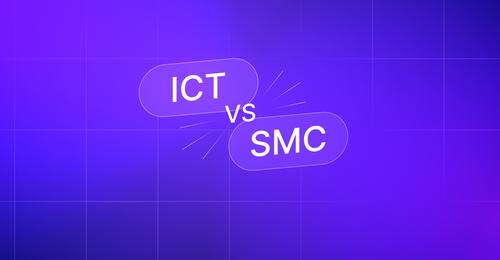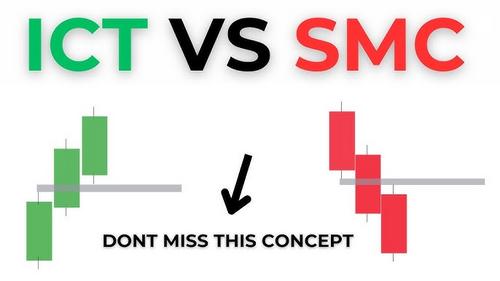In the world of trading, understanding different methodologies can significantly influence a trader’s success. Two prominent trading frameworks that have gained attention in recent years are ICT (Inner Circle Trader) and SMC (Smart Money Concepts). Both approaches aim to provide traders with the insights needed to navigate the markets profitably. In this article, we will explore the core principles of ICT and SMC, their differences, and how traders can implement these strategies in their trading.
Understanding ICT (Inner Circle Trader)¶
ICT is a trading methodology developed by Michael J. Huddleston, often referred to as ICT. His approach emphasizes the analysis of market structure, order flow, and the psychology of institutional traders. ICT provides a framework for detecting market shifts and understanding where the “smart money” is positioned in the market.
Key Components of ICT¶
- Market Structure: ICT traders analyze the highs and lows of price movement to identify whether the market is in an uptrend, downtrend, or ranging. Understanding market structure helps traders determine potential entry and exit points.
- Order Blocks: An essential concept in ICT is the identification of order blocks, which are areas where institutional traders have entered the market in significant volumes. These zones often act as support and resistance levels.
- Liquidity: ICT places a strong emphasis on liquidity and understanding where liquidity is concentrated. This helps traders anticipate possible market reversals and continuations.
- Time and Price Theory: ICT teaches traders that specific times can indicate potential changes in price direction. By aligning specific price levels with times, traders can sharpen their entry and exit strategies.
Understanding SMC (Smart Money Concepts)¶

Smart Money Concepts (SMC) is another trading methodology that focuses on understanding the behavior of institutional traders—often referred to as “smart money.” While it shares similarities with ICT, it has its unique approach and principles.
Key Components of SMC
- Market Makers: SMC recognizes the role of market makers in influencing prices. Understanding how and why market makers operate can help traders identify potential market moves.
- Supply and Demand Zones: Similar to order blocks in ICT, SMC identifies supply and demand zones where the buying or selling pressure is expected to impact price movement. These zones help traders set entry and exit points.
- Wyckoff Method: SMC often incorporates the Wyckoff Method, which focuses on market cycles, accumulation, and distribution phases. By understanding these phases, traders can better determine the market direction.
- Volume Analysis: Volume is a crucial aspect of SMC, as it provides insights into the strength of price movements. Analyzing volume can help traders identify bullish or bearish market sentiments.
Key Differences Between ICT and SMC¶
While both ICT and SMC focus on the behavior of institutional traders, they have some key differences in their methodologies and trading strategies:
1. Core Concepts
ICT emphasizes market structure, order blocks, liquidity, and time/price theory as critical components for understanding market movements.
SMC prioritizes the actions of market makers, supply and demand zones, and the Wyckoff Method in its analysis.
2. Analysis Tools
ICT traders often use concepts such as Fibonacci retracement, market structure shifts, and mitigation of order blocks in their strategies.
SMC traders focus more on volume analysis and the identification of market cycles driven by the actions of market makers.
3. Trading Approach
ICT strategies typically involve detailed technical analysis, taking into account various factors influencing market movements.
SMC tends to be more focused on understanding the underlying forces of price action driven by institutional activity.
How to Trade Using ICT and SMC¶
Trading with ICT¶

- Identify Market Structure: Analyze the market for higher highs and higher lows (uptrend) or lower lows and lower highs (downtrend).
- Locate Order Blocks: Search for potential order blocks where institutional trading activity occurs, using these zones as potential areas of entry and exit.
- Assess Liquidity Levels: Identify areas of high liquidity to determine where potential price reversals might happen, and position your trades accordingly.
- Utilize Time/Price Theory: Align your entries with significant price levels based on time analysis, such as known market open or close times.
Trading with SMC¶
- Understand Market Makers: Analyze how market makers influence price movements and incorporate this understanding into your trades.
- Identify Supply and Demand Zones: Mark the supply and demand zones on your chart to recognize potential price points where the market may change direction.
- Apply Wyckoff Methodology: Use the Wyckoff Method to analyze market behavior and identify accumulation and distribution phases, allowing for more informed trading decisions.
- Monitor Volume: Pay close attention to trading volume to validate price movements and ensure you’re trading in the direction of smart money.
Conclusion¶
Choosing between ICT and SMC boils down to personal trading style and preference. Both methodologies offer valuable insights into the market, focusing on the behavior of institutional traders. Understanding the ict vs smc debate can help you decide which approach resonates more with your trading psychology and goals.
Traders can effectively implement either strategy by focusing on the key components and techniques discussed. Regardless of the method chosen, maintaining discipline, risk management, and continual learning are vital components for success in the trading world.
For those looking to further enhance their trading skills, consider the opportunities offered by SabioTrade – Ultimate Forex Trading Prop Firm, which includes funded trading accounts with a 90% profit share. With the right knowledge and tools, traders can achieve their goals and navigate the complexities of the financial markets successfully.

